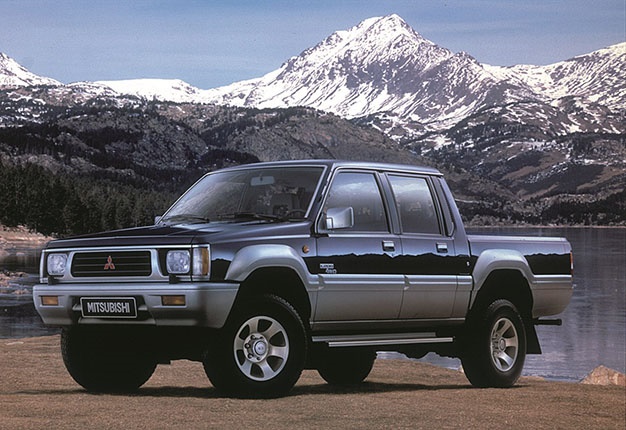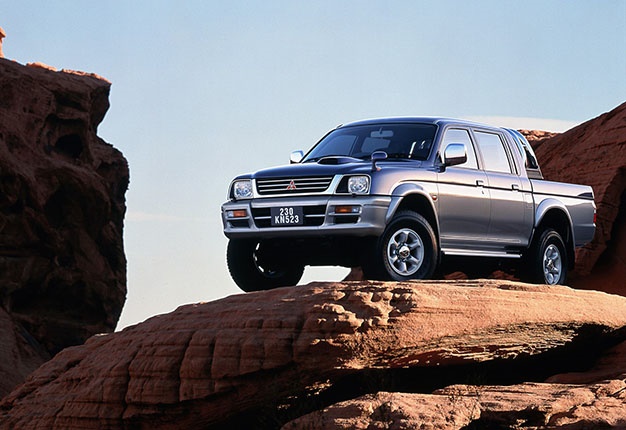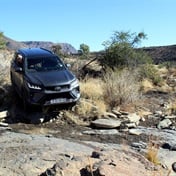
Mitsubishi isn’t South Africa’s largest bakkie brand but its customers are some of the most loyalist.
Although market share has fluctuated since the brand’s local reintroduction in the mid-1990s, this year celebrates 40 years of Mitsubishi bakkies, globally.
To mark the occasion, we present a retrospective, chronicling the Mitsubishi 1t bakkie timeline.
The original 1978
A design typical of its time the original Mitsubishi bakkie featured round headlights and was a product of the decade-long 1970s oil crisis.
READ: Where it all began - Mitsubishi celebrates 40 years of success in a tough bakkie segment
With fuel being expensive, an opportunity was created for Japanese brands to challenge, and topple, the superiority of American bakkie market share in various markets.
Which is your favourite generation and why? Email us
Japanese bakkies were smaller, and much lighter on fuel, but could get the work done. Whereas customers were convinced that an in-line six or V8 were the only sensible bakkie engine options, Mitsubishi proved the converse to be true.
Image: Supplied
These first-generation Mitsubishi bakkies were powered by 2- and 2.6-litre petrol engines for North American market and 1.6-litre inline fours for Japan and other regions. A 2.3-litre diesel engine was available for general exports. By 1980 Mitsubishi has ventured into equipping its bakkies with four-wheel drive.
The consolidation 1986
Mitsubishi’s second-generation 1t bakkie differed greatly from its predecessor in the generous broadening in the available configurations. During the 1980s bakkie were being used more often by construction and geological prospecting teams, and that means improved cabin architecture was a must.
Image: Supplied
The solution was found in producing club- and double-cab variants, which set a design theme that Mitsubishi evolved throughout its bakkie range over time, generation-after-generation.
When Mitsubishi returned to South Africa, the second-generation bakkie was close to the end of its life-cycle, yet the double-cab derivative, powered by a fuel-injected 3-litre V6, proved popular and gained the brand traction in the local market.
The Colt 1996
The third-generation bakkie heralded Mitsubishi’s ascent as a true influence in South Africa’s domestic motoring market. Although the long-wheelbase workhorse models proved popular with fleet buyers and government departments, due to their superior cabin comfort, it was the Colt double-cab which rebuilt Mitsubishi local standing.
Image: Supplied
Attractively styled, featuring a characteristic bonnet-scoop, these Colts were the inspired choice for double-cab ownership as South African transitioned through the millennium.
The 2.8-litre turbodiesel engine was good for 92kW, which was superior to its rivals of the time, and a club cab derivative appealed greatly to those entrepreneurs who wanted to claim back VAT on the vehicle purchase.
The Triton 2005
Colt had given Mitsubishi a handsome share of the double- and club-cab market, yet that positioned eroded somewhat with Triton. It launched locally in 2007 after the seventh-generation Hilux had already become available.
Ford launched its third-generation Ranger around the same time and suddenly, the South African bakkie market was awfully competitive. Triton suffered from an undue obsession regarding its styling.
Image: Supplied
The clamshell bonnet and swooping cab-lines were unusual, but they foreshadowed a new era of bakkie design – necessitated by evolving pedestrian crash safety regulations. Mitsubishi was perhaps a touch too forward thinking in anticipating these new requirements.
Mechanically these were fantastic bakkies, with a range of 2.5 and 3.2-litre turbodiesel engines which proved every bit as reliable as one would expect from a brand with Mitsubishi’s Dakar pedigree.
Ride quality was excellent and the Super-Select 4WD system, with an ability to shift between modes at high speeds and run a locked-centre differential in high-range, made the Triton an outstanding all-terrain bakkie.
The current one
Mitsubishi’s fifth-generation Triton has seen increased competition since its introduction a few years ago. Although its styling is no longer quite as outlandish, it remains an outlier bakkie in the local market.
Image: Supplied
For those who were raised in a Colt household and remain true to their commitment in all things Mitsubishi, the current Triton is a great deal.
The engines have downsized, to 2.4-litres, but with the associated gains in efficiency, there hasn’t been a loss of performance.
And with dimensions a touch smaller than its rivals, and clever front-suspension and steering geometry, Triton is perhaps the easiest of all double-cab bakkies to drive in an urban environment.




 Publications
Publications
 Partners
Partners



















